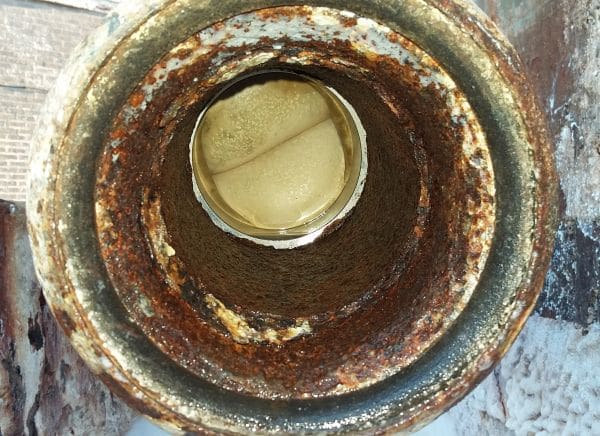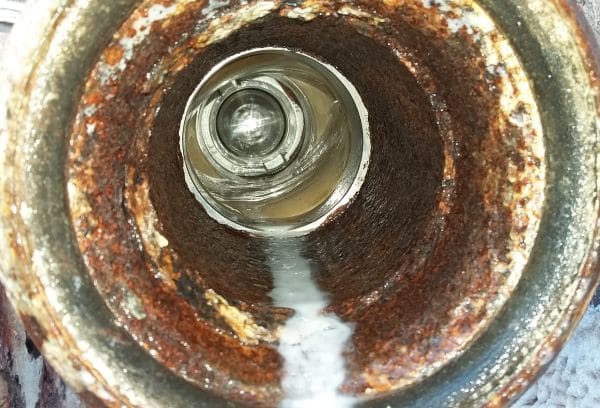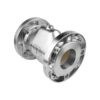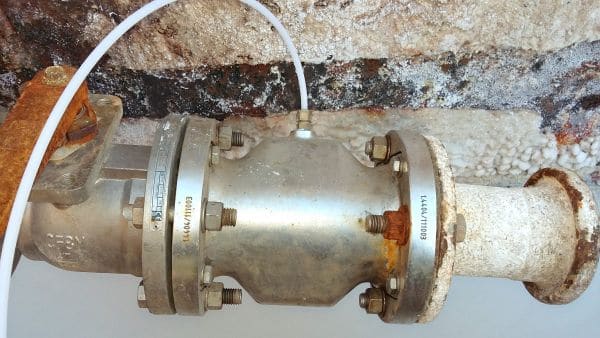A company manufacturing products such as sodium bicarbonate, soda ash, salt and electricity have recently installed an AKO Pinch Valve on site within their ‘mud’ application (gypsum solids – a waste product from purification stage), in replace of an actuated butterfly valve which was prone to scaling.
Pinch Valve used within this application – VMC80.02X.50FA.50
VMC model, air operated, stainless steel body, stainless steel ANSI flanges, white food quality natural rubber sleeve.
Pinch Valves Replace Seizing Butterfly Valves for Gypsum Solids
The main process of this company is to solution mine brine from underground, purify it, dry the salt and finally grade and package the end product for human consumption and water treatment. The duty that the valve is in is a very dirty and extremely corrosive environment, where a mixture of air and brine is continually present and the presence of solid gypsum usually causes lots of scaling/blockage issues.
Due to the highly corrosive nature of the brine and the food safety nature of the process, material of construction for the valve for gypsum solids is a vital consideration for all aspects of the plant. This is why AKO UK offered the company the VMC product range in 316 stainless steel. The pinch valve has a Natural Rubber food quality sleeve, complete with 316 stainless steel ANSI flanges, as requested by the end user.
Media passing through the valve: ‘mud’ (settled gypsum solids)
Temperature of media: 25-30’C
Pressure of media: 0.6bar.g on one side, open to atmosphere on the other side.
Position of valve: Horizontal, 4ft from floor.
The Pinch Valve is normally closed.
Amount of cycles per day: 25, operating 24hrs/day and 350 days per year.
No vacuum is being used within the application.
Amount of pressure used to shut off valve: 3bar to close

The company have currently only been using the AKO Pinch Valve for gypsum solids for 2 months, but are already exceptionally pleased with the results being performed. The Process Improvement Engineer on site says:
“We are currently very satisfied. The pinch valve has a 0% leak rate, operates very quickly and is performing as well now as the day it was installed. The pinch valve is perfect for us because it is easily replaceable, cheap and scale resistant.
First impressions are very good, the valve opens quickly and shuts almost instantly which is much more than can be said about the actuated butterfly valves previously used as these scale up and seize. The fact that it opens to the full pipe bore means that we can get a much larger flow through it too which minimises the chance of blockages in the pipe.”
Actuated butterfly valves were previously used for mud extraction from settlers in this application. The butterfly valves have lots of moving parts and a flow restriction, and also scale up and seize. The company also have a project on at the moment to replace the existing settler, so new technologies are being looked into to improve the settler operation. As part of this, pinch valves were suggested and thus the trial AKO pinch valve was purchased.
As of yet, the food quality natural rubber sleeve inside the pinch valve, which is the only wearable part (product code M080.02X) is yet to be replaced, but we are predicting very good results for this application.
The company also have the safety solenoid arrangement assembled onto the pinch valve for gypsum solids to prevent it from opening on site air or electric loss. (see more pinch valve accessories here).





